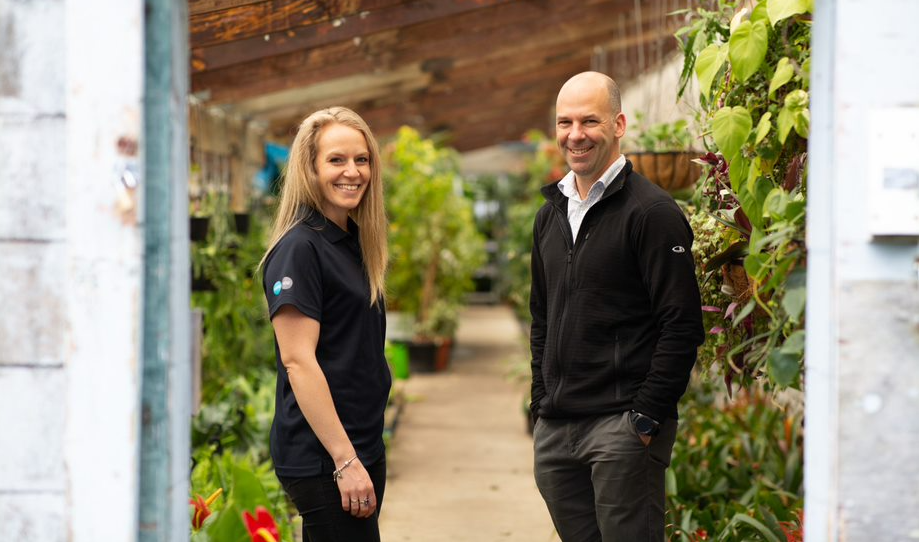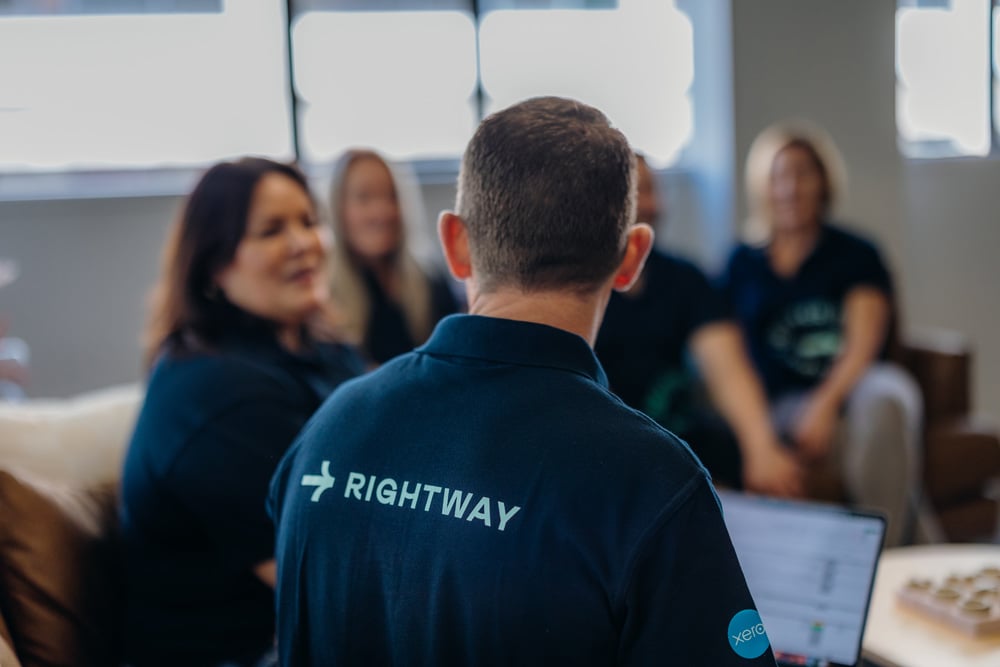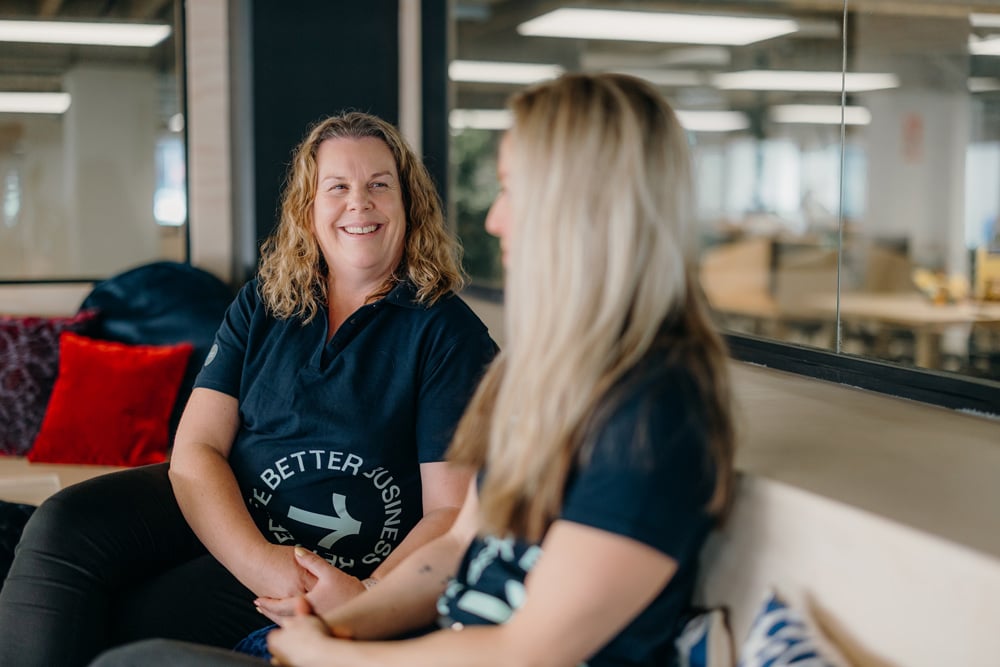Recently in a blog we touched on the idea that acquiring a new customer is much harder than retaining an existing one. In this article, we’re going to explore this topic of keeping your old customers connected to your business and ways to build more loyalty that drives repeat business.
Why your existing customers should be a priority
Think of all the moments and decisions someone needs to have before they commit to buying from you. It can take well over half a dozen interactions with your brand which could have come through advertising, vehicle signwriting, phone calls, email newsletters, and the list goes on. Adding up all the effort, money and time spent on putting your business in front of the right audience deserves the effort after they’re purchased to keep them connected.
As consumers, we appreciate being appreciated. It’s one thing to get a customer over the line, it’s another to actively communicate with them after. Keeping existing customers feeling positive towards your business is a priority because:
- It will keep your brand front of mind for when they may need to engage again
- By providing non-salesy tips and insights amongst your comms with previous customers, you’re actually enhancing the perceived value and expertise you offer outside of just product or service
- It will give them fewer reasons to go with another business in your space as you become a familiar voice to them
- For many types of businesses, it’s actually easier for a customer to re-buy from someone they’ve dealt with due to trust, knowledge of the offering, track record and even having already ‘signed up’ with personal details. This is especially true if you’re a business that offers a service and your work has spoken for itself in a past job
- Customers who love your brand and offering can become advocates for you, sharing you with their friends, family and colleagues. You can’t ask for better marketing than that carried out by your loyal customers!
Understand why older customers haven’t transacted recently
If you’re in the situation where you’ve got a big database of customers with a large % that you haven’t engaged with for a long time (6 months+), you may want to do a review into why they haven’t come back recently. You might have a business where the jobs are larger and farther between, although you should still keep these customers engaged so you are in the best position to be chosen when they next need your services, such as a builder or other trades.
For other businesses which are reliant on regular product purchase or services, it’s worth doing some analysis on the customers that do come back vs the ones who have. Are there any clear differences in how they were engaged with, where they came from and the products/services they bought? Any trends here can help identify possible opportunities and adjustments to your retention strategy.
Don’t be afraid to reach out to older customers with whom you’ve not talked to for a while. Nor should you avoid referencing the fact that it’s been a while since you’ve talked. Ideally once you’ve installed a good customer engagement strategy, you wont need to do this regularly. But if that situation has presented itself, it may be time to (re)break the ice.
How you go about contacting old customers depends on your resources and the size of the database. If it’s a smaller group, you might find the best course of action is to give them a call and see how they’re finding their product or service delivered last time, and even share any new offerings that could be of interest. But ultimately that contact is to make sure they know you’re still thinking about them.
For larger databases, and as a follow up to a phone call, you should consider emailing out old customers with tailored copy that is genuine and not too pushy. You might want to call out the fact that it’s been a while since you last spoke with them, and then share some interesting updates about the business, along with some tips that could help them.
In these communications, you’ll have opportunities to learn reasons why old customers haven’t come back in a while. There’s nothing quite like direct feedback to help business improvement. Our advice is to not be pushy here at all, otherwise it can turn customers off more than if you’d simply not contacted them again. Instead, try framing the question later in the discussion or email comms, and use language like “Is there anything you think we could do better on? We’d like to hear your feedback”.
Review your post-sale engagement activity
Now it's time to take a microscope to your current behaviours and processes around a customer after they’ve transacted. Don’t feel too bad if the answer is a bit short, many businesses don’t actively develop these strategies. It is a big missed opportunity though, but luckily not one that you can’t get back.
By reviewing what you and your team currently does with customers after the sale, you can quickly learn where you have areas for improvement or what steps to introduce. Some common issues can be:
- Not thanking the customer with a follow up email and/or phone call after the product is supplied or job completed
- Not having a customer relationship management system that has dated entries of communication with each customer
- Lack of customer details that prevent easy communication
- No email/EDM activity that keeps past customers in your business’ orbit
- No welcoming feedback loop to demonstrate care and improvement
Design a customer care process that keeps people engaged with the brand
With the help of your customer-facing, sales and marketing team, look to build a simple but effective experience post-sale that will keep people engaged. Some steps of this might include:
- Emailing customers straight after purchasing to thank them for their business. Include any care tips or insights that will enhance their experience with your offering they’ve bought
- Schedule an email 1-2 weeks after delivering the service or product and encourage them to share any feedback, questions and if applicable, leave a review on your website. You can also encourage them to follow and review on social media to share their experience - just don’t solicit ‘good’ reviews only
- For larger sales such as big orders or businesses who provide a trade, make sure to follow up 2-4 weeks after engaging to make sure everything is going well with a phone call
- After a month or so, put your previous customers into a database and send specific email comms that showcases your latest products/work, offers tips and ideas and any other value-adds you can give
- Within these emails, include loyalty discounts or giveaways, clearly articulating these are exclusive to existing customers
- Provided you are following all applicable platform policies and regional laws, you may be able to use your existing customer database list for targeted advertising online. This can help ensure you push messaging to existing customers that makes sense to their existing knowledge and use of your offering. This should be different from what totally fresh eyes on your brand would see in ads
- Remember customers during seasonal events, without necessarily pushing product or service sales
The key here if you’re starting with little, is to get a few key moments embedded in your business. The keyword in this process is care. Thanking and offering support if needed can go a long way, especially in today’s world!
Reintroduce the brand to older customers
While customers that haven’t engaged with you for many years might automatically seem like a ‘remove from our database’ situation, you don’t want to do this until you’re absolutely sure they won’t need or want to deal with you again. We’d recommend leveraging email communications and ‘reintroducing’ the business to these old customers. If it’s been a few years, you may be a totally different proposition from people to logo to premises.
Your email distribution tool and the customer’s own email client should allow them to unsubscribe if they don’t want to be contacted again. The rest? The door may not be closed to doing business with them in the future.
Nurture relationships
Long term business is often the byproduct of a great working relationship between you and your customer. If you’re in a business where one customer can potentially mean significant revenue, then your model should include keeping conversations happening with them on a regular basis.
Let’s take the example of a builder. While a customer may first engage to get a fireplace removed, they’ll likely have a number of other renovations and repairs they want to make on their home. By doing a great job, you lay the foundations for future work with that customer. But you can front foot this discussion by showing keen interest in their long term plans, offering free tips for how to tackle future projects and generally being very approachable. It might be that you don’t do another job for a year or more - but you’ll be front of mind when it comes time to find another builder.
Going this extra mile is also tremendously valuable in the word-of-mouth strategy that can really pay off for businesses. If you put the effort into each customer, this will be remembered when they’re asked by someone they know for a recommendation. It’s also a great way to get voluntary positive reviews without asking.
As the popular Maya Angelou quote goes: “People will forget what you said, people will forget what you did, but people will never forget how you made them feel.”. This rings true in businesses that interact with customers. Start prioritising the quality of your customer relationships and interactions - it’ll pay dividends ultimately, not to mention it makes for a far more pleasant business to run!
Introducing loyalty programmes
From the 10 visit coffee card to the discounted internet plan, loyalty programmes are found across all industries and sizes of business. Even the large enterprise vendor can benefit from introducing discounts and benefits for long term clients.
Some loyalty programmes can be as straightforward as the x visits and get your next one free model. For others, it might be a points system which takes more configuration but has proven effectiveness at getting repeat sales. There are software solutions for helping manage loyalty that you can find online.
But there’s also the option of simply rewarding existing customers’ with something out of the blue - be it a discount voucher, a giveaway or something else of value. The goal here is to have customers recognise they are valued by your business. How and what is largely dependent on your business and industry.
Make your brand one to believe in
Through social media, video, website, advertising and other channels, you can continually reinforce your business and what it does. Previous customers will likely see some of this activity, so you want to make sure you’re giving them reason to want to come back. This isn’t about the hard sell, but providing content on things like:
- Community and social initiatives
- Sponsorship of sports and events
- Spotlight on your business’ team members and getting to know the people behind the brand
- How to videos
- Funny / topical posts
- Speaking to your purpose/why through advertising
- Sharing happy customer stories
- Leading the space with great showcases of your products or services e.g. a photo gallery of a finished deck for a builder, or high quality video of a product’s features.
- Engaging with people on social media - e.g. replying to comments on different channels.
Loyalty takes time
Hopefully you’ve found some useful tips in this article. The process to embed great customer loyalty is not an overnight fix, and is often part of a broader effort around building a business that’s efficient, great with communication and continually improving.
But engaging with past customers can happen right now if you want - pick up the phone, write an email and make that connection - it’ll be a lot cheaper than the cost of finding someone to replace their lost business!
Looking for business strategy support?
RightWay’s team of business partners know how successful businesses are made. If you’re a business owner looking for ways to strengthen your customer experience and encourage repeat business, give us a ring on 0800 555 024 or fill out our contact form to chat more. We’re also here to help with all your accounting, bookkeeping and payroll needs.





